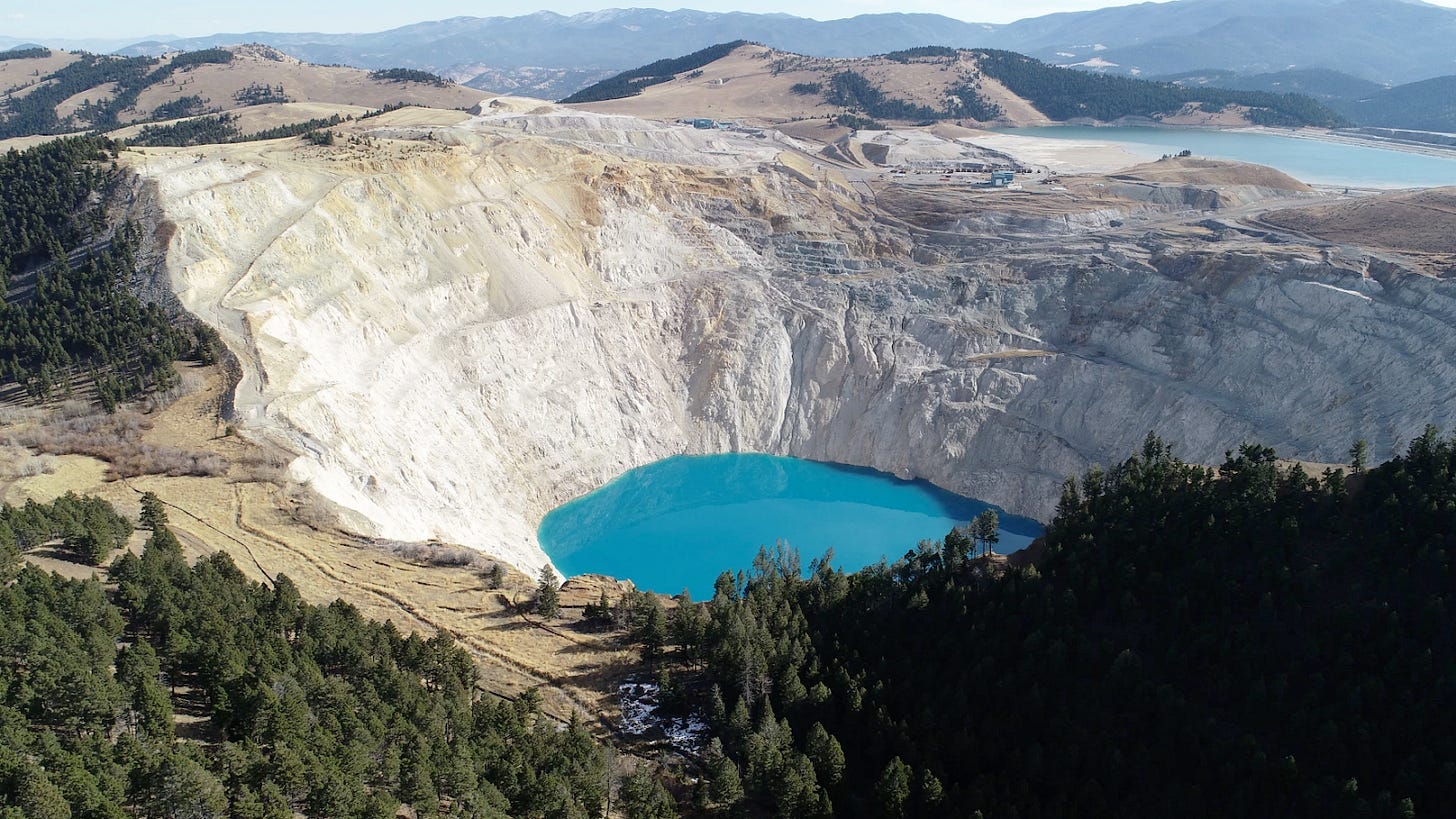From 2019-2021, I ran an internal startup developing a drone water sampling technology at a major environmental consulting firm. We primarily deployed the technology in pit lakes, but also did a bit of testing at reservoirs in the Front Range and Summit County, CO.
“What are pit lakes,” you ask?
It starts with the pit. During open-pit metals mining, rock is extracted from the ground to get at ore (from which metals are extracted). Depending on the target metal and nature of the deposit, you might get ~1 unit of metal for 10 units of rock extracted (e.g. aluminum), or you might get ~1 unit of metal for every 1,000,000 units of rock extracted (e.g. gold). The rest (the other 9 to 999,999 units) is waste rock that needs to be removed from the ground to get at the metals — making very large pits. Our societal appetite for commodities (by way of energy, infrastructure, and consumer products) leaves some giant holes in the Earth.
Now for the lake… When mining goes below the groundwater table, water will start to naturally accumulate in pit bottoms. During mining, the water will be pumped out and stored or managed elsewhere. After mining, when the pit is abandoned, pumping stops and water starts to fill up to level of the natural groundwater table.
Rocks exposed in the pit walls often have not been exposed to natural atmospheric conditions (i.e. 21% O2, freshwater precipitation, in some cases lots of humidity), and the minerals in those rocks will start weathering. Weathering products, which may include acidity, alkalinity, salts, and metals, rinse into lakes and influence the water’s chemistry.
Due to their volume, lakes are often important components of mine water management systems. Depending on the jurisdiction, environmental regulators require them to be sampled anywhere from quarterly to annually.
Historically, people would go out on boats in the middle of pit lakes to drop sondes (to measure profiles of parameters like temperature, conductivity, pH, etc.) and collect water samples. However, pits are not engineered for long-term stability. Landslides occur, which can cause tsunamis in lakes. Because the pit is essentially a rock dish, there is very little way for that energy to dissipate — I spoke to someone who watched a pit lake seiche for nearly a day after a landslide event.
Anyhow, we developed a way to take water samples using heavy-lift drones. We demonstrated equivalent sample quality to boat-based sampling. Regulators accepted our method. And most importantly, we kept people out of the water and harm’s way.
You can check out my work here:
Research Article: A Validated Method for Pit Lake Water Sampling Using Aerial Drones and Sampling Devices
Drones Make Water Sampling Safer:


